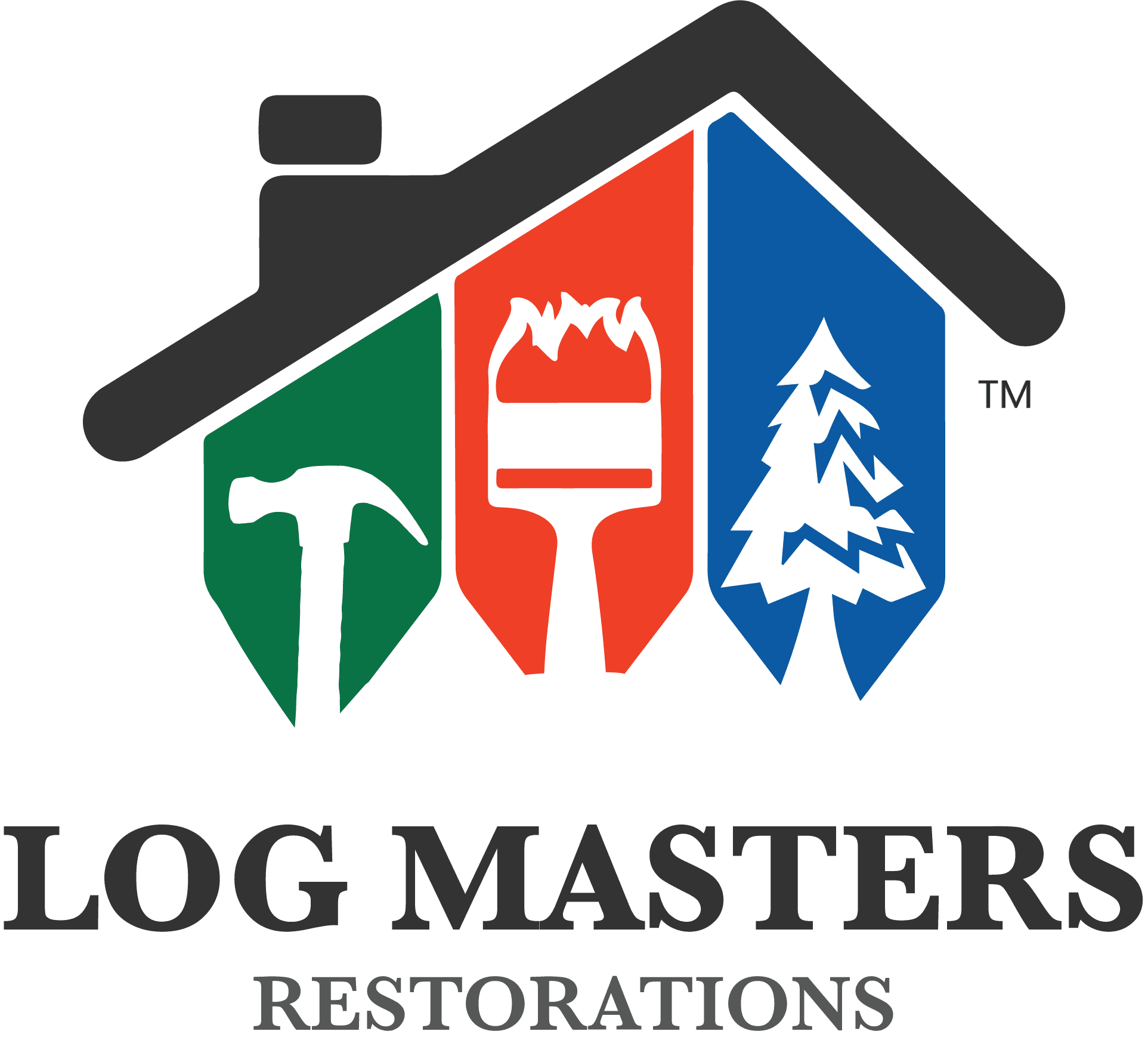Sanding & Grinding
Sanding & Grinding Services
Details
Overview
Log Home Sanding & Grinding Services
Much like media blasting, sanding and grinding are part of the pre-stain log surface prepping process. Sanding is typically performed after media blasting and removes stubborn stain on the logs or tail ends that media blasting sometimes leaves behind. Grinders are used on the tail ends of logs to smooth the rough-end grain.
If your log home needs professional sanding or grinding work prior to staining, Log Masters Restorations would love to earn your business. We’re here to answer all your sanding and grinding questions. Read on for a glimpse into how we decide whether to sand or grind logs before applying stain to your log home. Contact our professionals today to discuss the specifics.
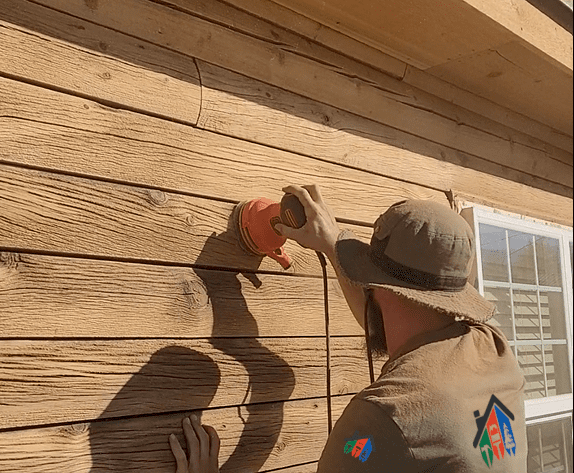
Description
What Is Log Home Sanding and Grinding?
Sanding and grinding services are used to prep the log home’s wood exterior for staining.
Can you make your log surface smooth like glass?
Sure. We do that for interior walls, but we don’t recommend that degree of sanding for the exterior of your home. A slightly textured wood surface will absorb more stain and create a stronger bond.

When sanding wood to a glass-like smoothness, the surface wood fibers heat up and condense. Condensed wood fibers actually repel liquid, and that’s the opposite of what you want when staining your log home.

If your logs have a smooth, glass-like surface, the stain may bead up or roll off, making effective adhesion nearly impossible. Premature blistering or peeling may occur if protective stain is unable to penetrate the wood surface.
Do you have to sand a log home after media blasting?
Not always. Sanding is elective when it comes to a media blasted log home. While not necessary, it does provide a nice look and can remove any problem areas that may have been left behind by blasting the home with recycled glass media.
Sanding is, however, an important step after chemical stripping. Using a pressure washer to remove a chemical stripping agent and old stain can leave a wood surface fuzzy or splintered. Sanding will bring back that fresh milled look!
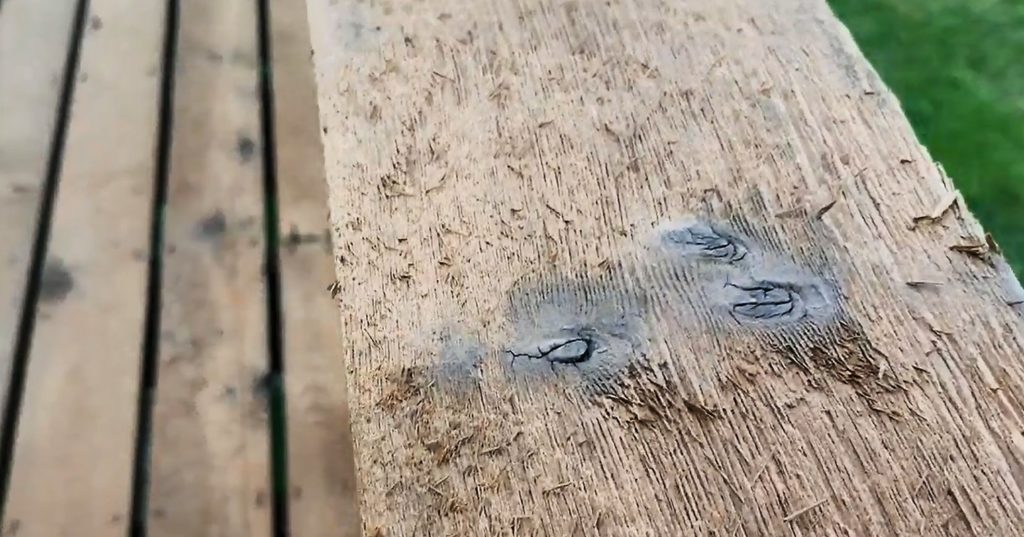
Uses
Log Surface Stain Prep
For preparing the log surface prior to stain after media blasting or chemical stripping. It also used on tail ends, smoke damage or stubborn stained surfaces.
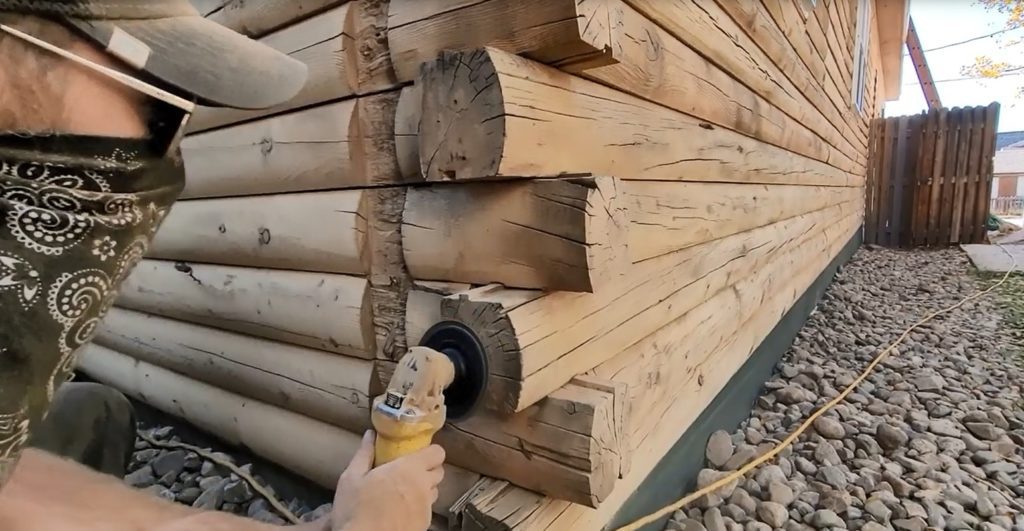
Process Steps
Log Cabin Sanding

Step 1
After media blasting or chemical stripping, use 40-60 grit sand paper to knock down the:
- rough surfaces to less rough
- any feathered fibers
- removes any left over stain
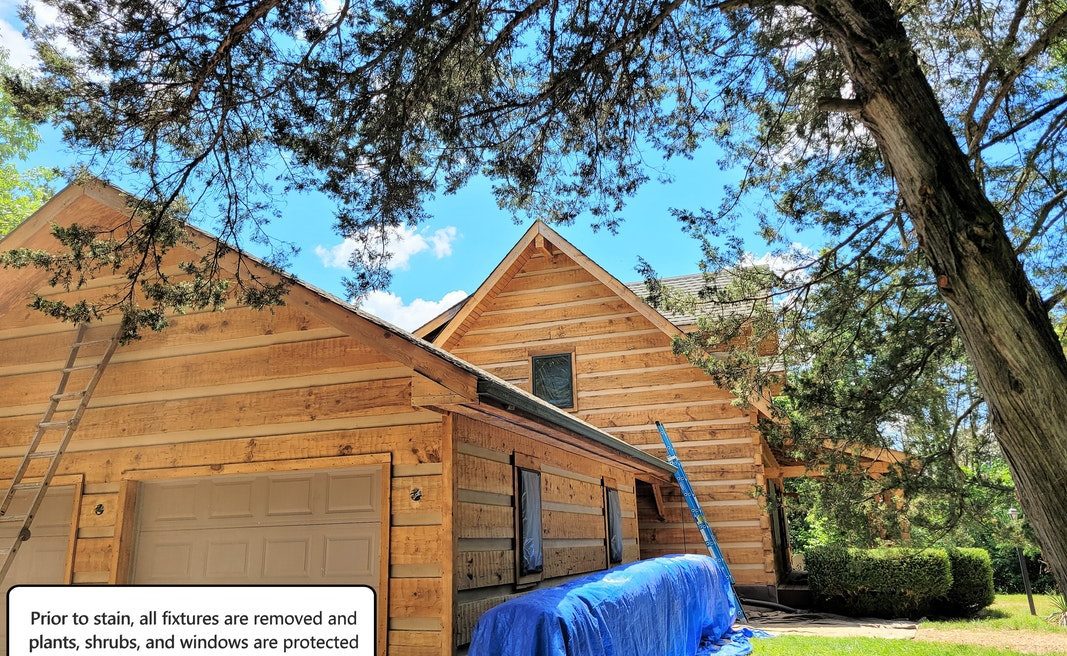
Step 2
Stain prepping always precedes staining and can include multiple elements. These may include caulking or chinking, log wash treatments and Prelude (if necessary). Before staining can begin, fixtures must be removed and all windows, stone walls and shrubs have to masked or tarped for protection.
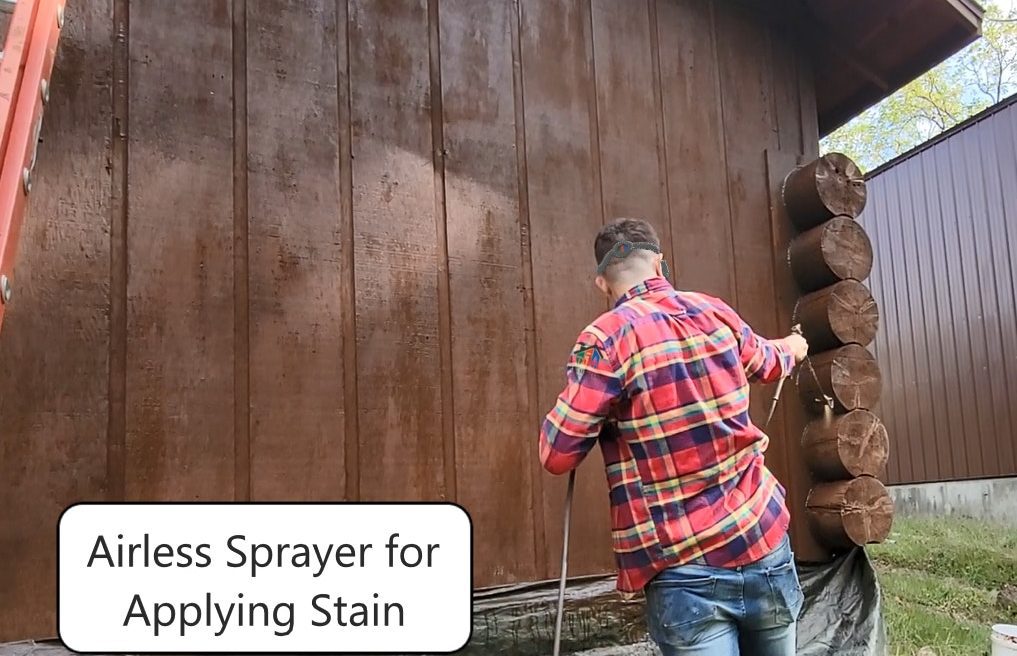
Step 3
Using an airless sprayer, stain is applied to the logs using a top-down method, starting with the highest logs and then working down to the foundation. While spraying, the stain is immediately back brushed to evenly distribute it, ensure it penetrates all the fine cracks along the log and avoid drip lines.
For oil-based stains, apply two coats wet on wet or wet on dry, depending on the directions and condition of logs.
With water-based stains, Prelude is commonly used as a primer and can be applied the same day as the stain. Once the primer is dry, apply three coats of stain with four hours dwell time or between coats.

Step 4 (Water-Based Only)
Water-based stains require a clear coat, which should be applied generously. Back brushing, or “babysitting the wall,” is important during this step to avoid pooling or drip marks. You don’t want the clear coat to be too thick, and dripping can leave milky white lines on the log surface that will detract from your log home’s charm.
Scroll through steps
Free Estimate
Need Log Home Sanding Before Staining?
If your log home has recently been media blasted or stripped of chemicals, there’s a good chance it might need to be sanded before a new coat of stain is applied. Skipping this step could leave your home’s wood exterior looking ragged or shabby. The right amount of sanding will give it a nice finish and allow stain to properly seep into the logs.
When you hire Log Masters Restorations for your sanding and grinding needs, you’ll have peace of mind that your log home is in good hands. Our team of expert log home sanders who will perform top-notch stain prep work. Your home deserves to look its best, so make sure you bring in the best restoration professionals to get the job done. Estimates are fast and free.
Sanding Application
Other Services
Learn About Our Other Services
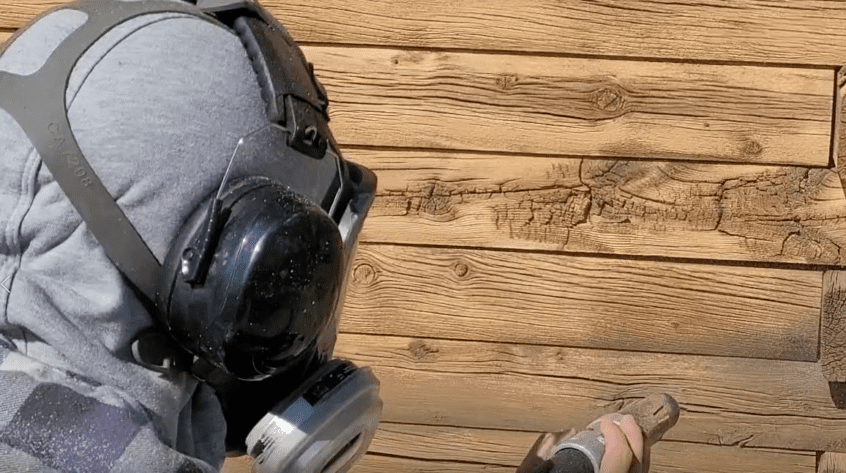
Media Blasting
Log Masters Restorations uses a high-pressure media blaster that shoots recycled glass through a hose to remove paint and wood stain.
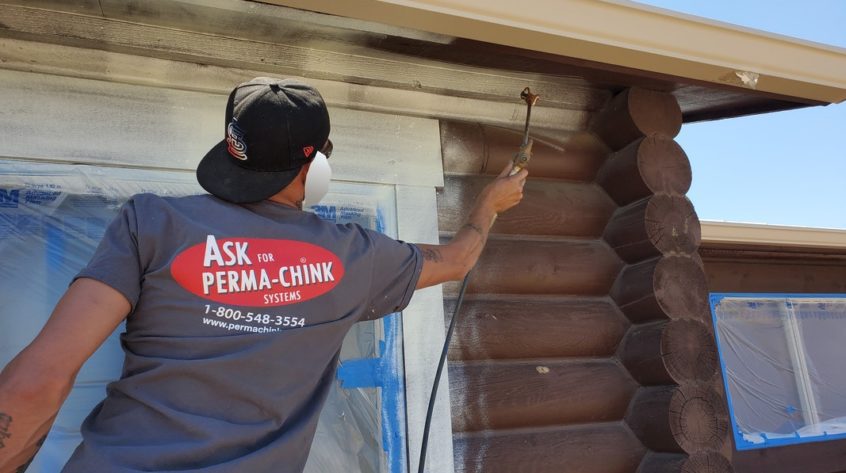
Chemical Stripping
Our finish remover reaches into wood pores to release paint or other film-building products and is then washed off to expose natural wood.
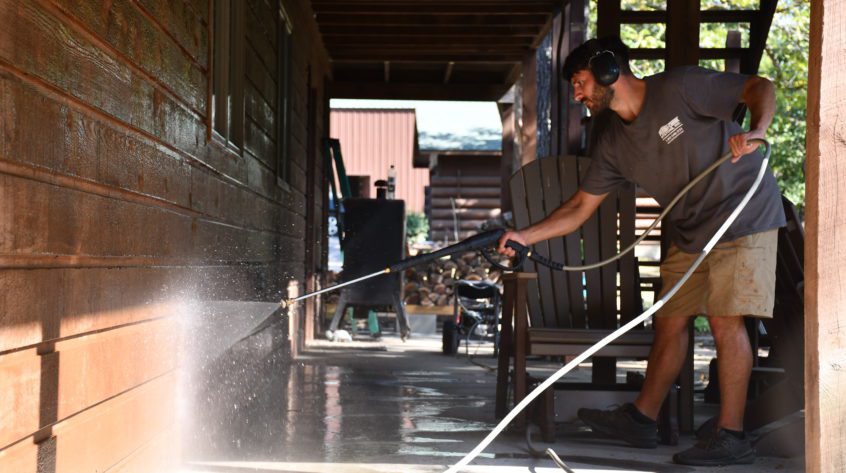
Pressure Washing & Cleaning
Dirt and grime on logs can be tough to remove. Pressure washing is used to clean log homes and wash away chemical stripping agents.
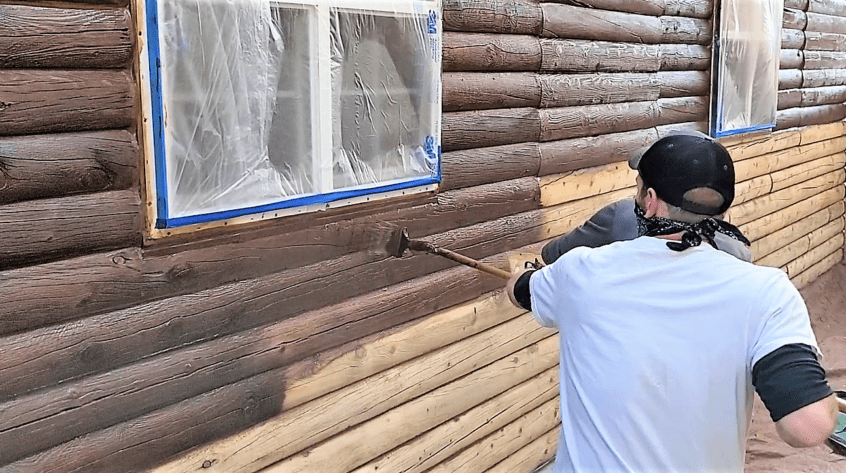
Staining
Staining protects your log home from the environment. Our water-based stain and oil-penetrating stains come in a variety of colors.

Caulking
Caulking seals the gaps in your log home joinery and is commonly used for homes with smaller logs or around windows and doors.

Chinking
Chinking is a sealant that looks great great on large round or beam-style log homes that can be added to caulking to create a tighter seal.

Log Repair & Placement
Don’t ignore log rot! Our crews are trained to hunt down problem areas, cut them out, replace them with a new logs, and seal them tight.
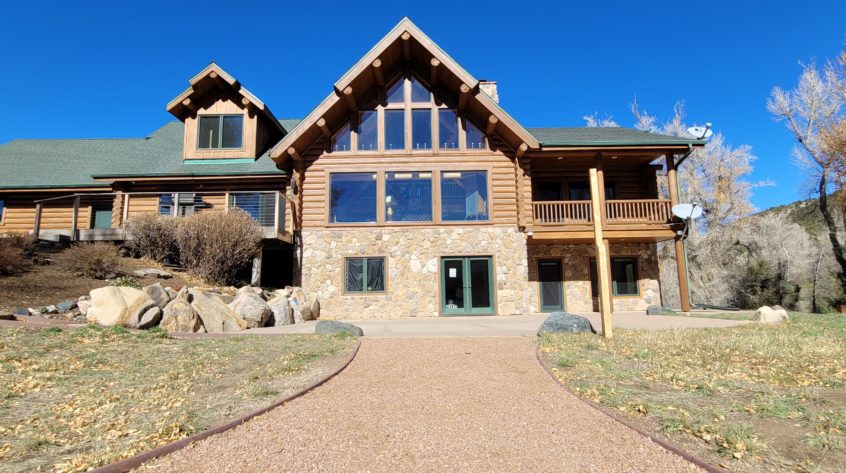
Log Home Maintenance
Log Masters offers an array of routine maintenance services like sealing and preservation to keep your log home in good condition.
Scroll through services
